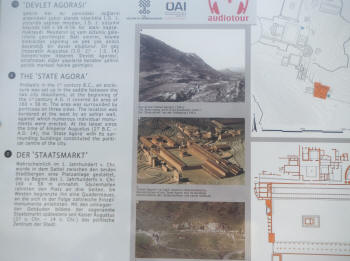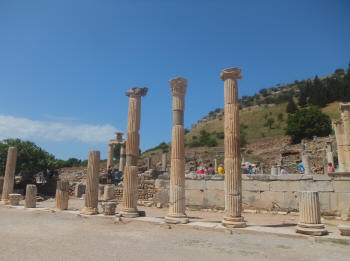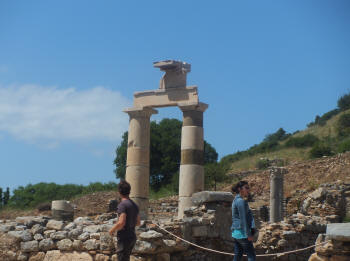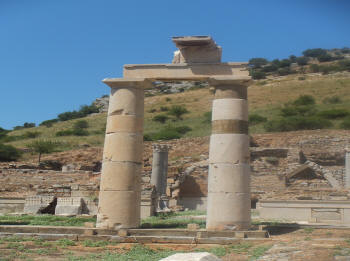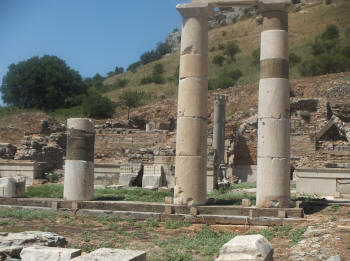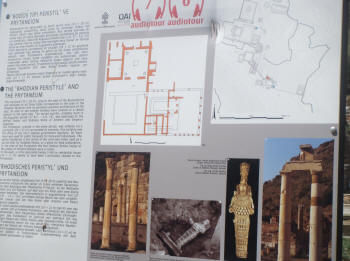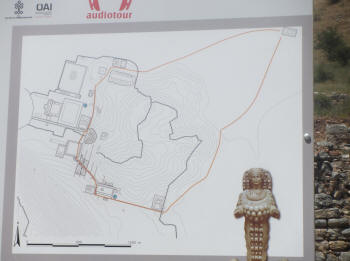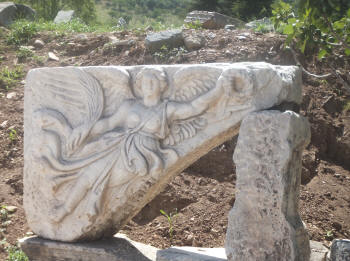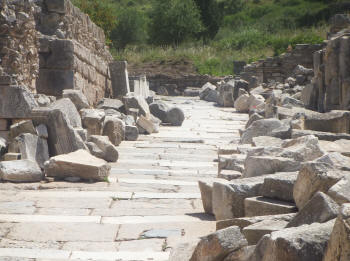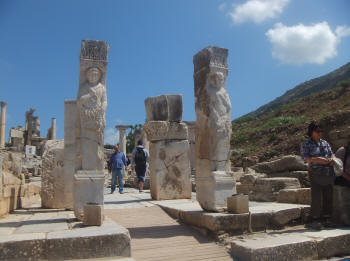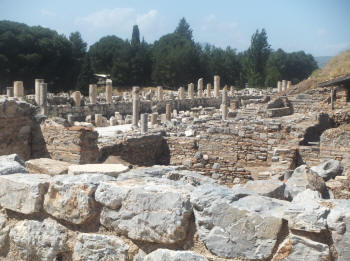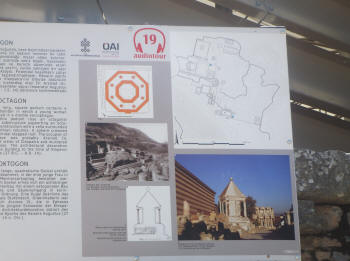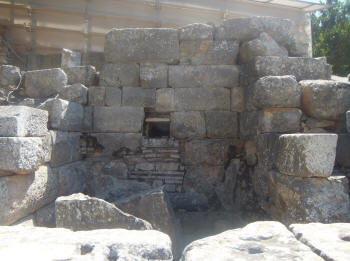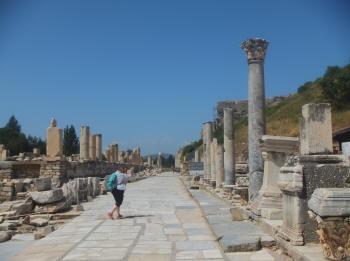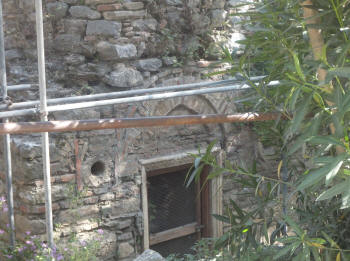
Ephesus
The Church in Ephesus: Misplaced Love
Revelation 2:1-7
REV 2:1 "To the angel of the church
in Ephesus write:
These are the words of him who
holds the seven stars in his right hand and walks among the seven golden
lampstands: 2 I know your deeds, your hard work and your perseverance. I know
that you cannot tolerate wicked men, that you have tested those who claim to be
apostles but are not, and have found them false. 3 You have persevered and have
endured hardships for my name, and have not grown weary.
REV 2:4 Yet I hold this against
you: You have forsaken your first love. 5 Remember the height from which you
have fallen! Repent and do the things you did at first. If you do not repent, I
will come to you and remove your lampstand from its place. 6 But you have this
in your favor: You hate the practices of the Nicolaitans, which I also hate.
REV 2:7 He who has an ear, let
him hear what the Spirit says to the churches. To him who overcomes, I will give
the right to eat from the tree of life, which is in the paradise of God.
(NIV)
Ephesus was given the title “Supreme
Metropolis of Asia.” It was a large city which by NT times were estimated to
have a population of 250,000. Ephesus was a major commercial, religious and
cultural centre for Roman Asia.
·
Commercial
o
Three major trade route converge on the city;
§
From the Euphrates by way of Colossae
§
From Galatia through Sardis
§
From the Macander valley to the south and east
o
A port, situated at the mouth of the Cayster River
to the Aegean sea.
·
Religious
o
Imperial Cult
§
Temples were built to emperors Claudius, Hadrian,
and Severus
o
Temple of Artemis (Diana in Latin)
§
One of the seven wonders of the ancient world
§
Four times the size of the Parthenon in Athens
§
127 pillars of Parian marble with 36 covered with
gold and jewels according to Pliny the elder.
·
Politico-Cultural
o
Not the capital of Asia (Pergamum was)
o
Roman free city, granted the right to
self-governance
o
A major stadium, marketplace and theater
Ephesus
and Christianity
·
The Christian faith came to Ephesus perhaps with
Aquila and Priscilla about AD 52 when Paul left them there while enroute from
Corinth to Antioch (Acts 18: 18-22)
·
Apollos, too, had been there (Acts 18:24-28) and had
an effective ministry, especially as his understanding of the way of God was
more accurately explained to him by Priscilla and Aquila (18:26).
·
When Paul returned to Ephesus, he found a group of
disciples who were familiar with John's baptism (probably the result of the
teaching of Apollos), but had not yet received baptism in the name of the Lord
Jesus (19:1-7). For three months, the apostle Paul taught in the synagogue at
Ephesus, followed by two years of teaching in the school of Tyrannus. The result
was that many were saved and the gospel was heard throughout Asia (19:8-12).
·
When the seven sons of Sceva, a Jewish chief priest,
attempted to cast out demons by using Paul's words and were overcome by them,
the vast difference between magic and Christianity was demonstrated. Many of the
new converts wished to make a complete break with the magic of their pagan past
and burned their books publicly, books which were worth 50,000 pieces of silver.
As a result, the gospel continued to flourish in Ephesus (19:13-20)
·
Because of the size and dedication of the Ephesian
church it became a threat to the idol-making industry in Ephesus. Led by
Demetrius, a silversmith, his trade guild violently opposed Paul and the
Ephesian church. An angry mob formed and two of Paul's companions were seized.
While some of the Ephesian political officials restrained Paul from going before
the hostile mob, the town clerk persuaded the crowd to settle their dispute in
the courts, not in the street. Shortly after Paul left for Macedonia (Acts
19:23-20:1).
·
Paul passed by Ephesus later because he was eager to
reach Jerusalem in time for Pentecost and was determined not to be delayed by a
stop in Asia. He did, however, call for the Ephesian elders to meet with him at
Miletus (Acts 20:16ff.). It was there that Paul told them of the prophecies
concerning the danger of his returning to Jerusalem. His final words concerned
the kind of ministry he had demonstrated before them as an example for them to
follow. Of particular importance are these words about false teachers (Acts
20:28-32)
·
He later wrote to Timothy, whom he had instructed to
remain on at Ephesus in order to deal with those who were teaching false
doctrine (I Tim. 1:3-7). Of particular concern in the first epistle to Timothy
was the matter of church leadership.
·
Tradition would have it that John, too, had lived in
Ephesus, during his old age. It was through him that the exalted Lord chose to
address the church at Ephesus.
·
Following the Edict of Thessalonica from emperor
Theodosius I, what remained of the temple of Artemis was destroyed in 401 AD by
a mob led by St. John Chrysostom
·
Two decades later, the church at Ephesus was still
important enough to be addressed by a letter written by Bishop Ignatius of
Antioch to the Ephesians in the early 2nd century AD, that begins with,
"Ignatius, who is also called Theophorus, to the Church which is at Ephesus, in
Asia, deservedly most happy, being blessed in the greatness and fullness of God
the Father, and predestinated before the beginning of time, that it should be
always for an enduring and unchangeable glory" (Letter to the Ephesians). The
church at Ephesus had given their support for Ignatius, who was taken to Rome
for execution.
·
A legend, which was first mentioned by Epiphanius of
Salamis in the 4th century AD, purported that Mary may have spent the last years
of her life in Ephesus. The Ephesians derived the argument from John's presence
in the city, and Jesus’ instructions to John to take care of Mary after his
death. Epiphanius, however, was keen to point out that, while the Bible says
John was leaving for Asia, it specifically does not say that Mary went with him.
He later stated that she was buried in Jerusalem. Since the 19th century, The
House of the Virgin Mary, about 7 km (4 mi) from Selçuk, is purported to have
been the last home of Mary, mother of Jesus in the Roman Catholic tradition,
based on the visions of Sister Anne Catherine Emmerich. It is a popular place of
Catholic pilgrimage which has been visited by three recent popes.
·
The Church of Mary close to the harbor of Ephesus
was the setting for the Third Ecumenical Council in 431, which resulted in the
condemnation of Nestorius. A Second Council of Ephesus was held in 449, but its
controversial acts were never approved by the Catholics. It came to be called
the Robber Council of Ephesus or Robber Synod of Latrocinium by its opponents.
Ephesus is an enormous archaeological site.
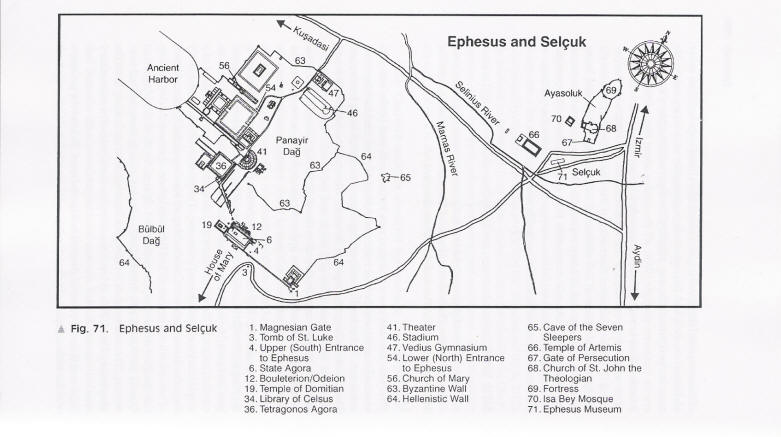
Kant & Reddish, 2003. A guide to biblical sites in Greece
and Turkey. Oxford; Oxford University Press, 184
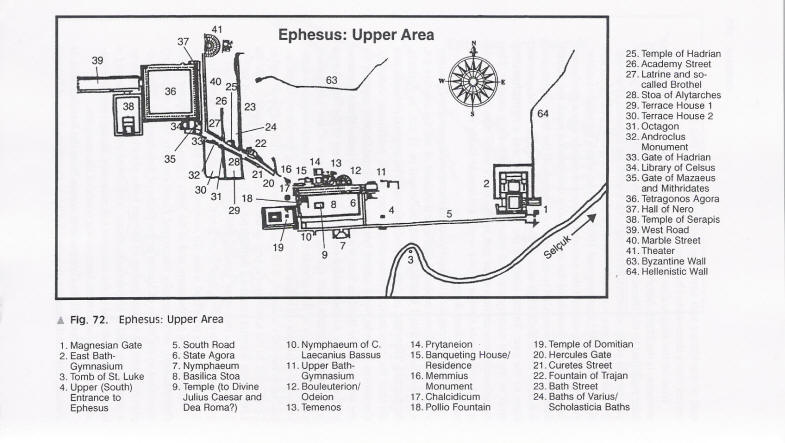
Kant & Reddish, 2003. A guide to biblical sites in Greece
and Turkey. Oxford; Oxford University Press, 186
|
|
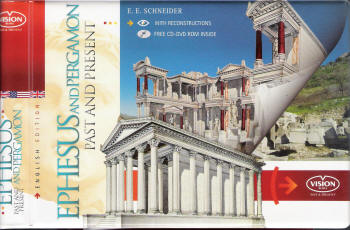
|
|
a good book with speculations about the appearanceof the original structures
|
|
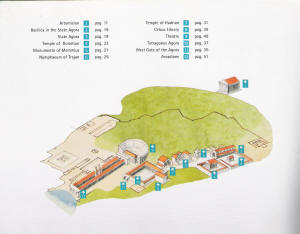
|
|
overview of the archeological site
|
|
|
|
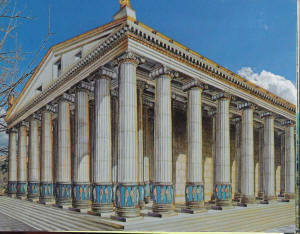
|
|
Artemision, one of the seven wonders of the ancient world
|
|
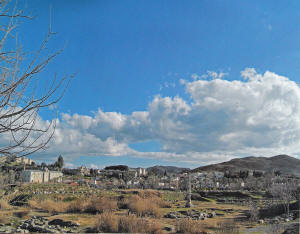
|
|
now
|
|
|
|
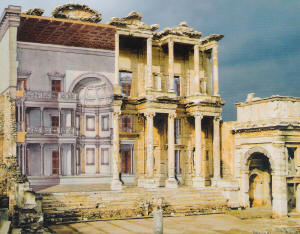
|
|
Celsus Library
|
|
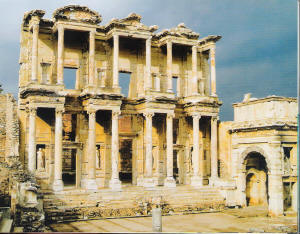
|
|
now
|
|
|
|
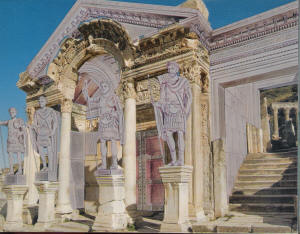
|
|
Temple of Hadrian then
|
|
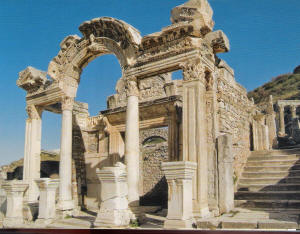
|
|
now
|
|
|
|
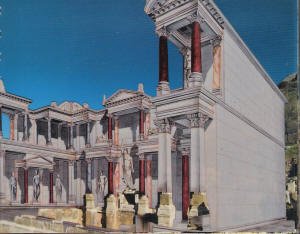
|
|
The Nymphaeum of Trajan then
|
|
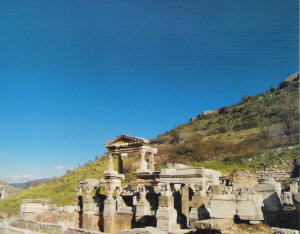
|
|
now
|
|
|
|
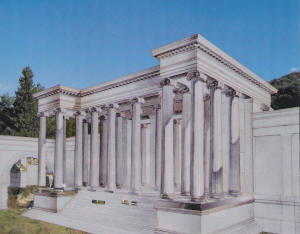
|
|
The Tetragonos Agora then
|
|
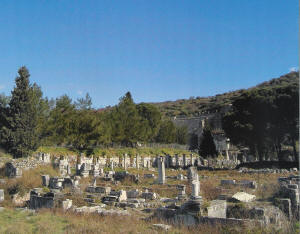
|
|
now
|
|
|
|
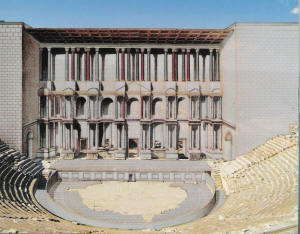
|
|
The Theatre then
|
|
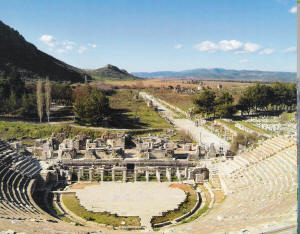
|
|
now
|
|
|
|
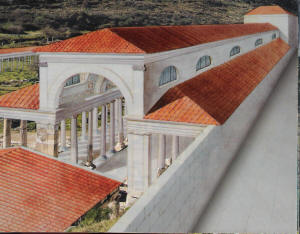
|
|
The State Agora then
|
|
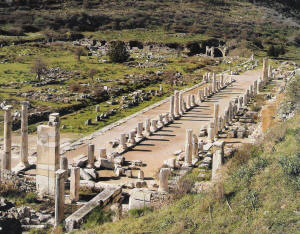
|
|
now
|
|
|
It was an exciting and touching experience to walk among the
ruins of Ephesus.
(click on photos to enlarge. Taken with a Fujifil Finepix Z)
|
|
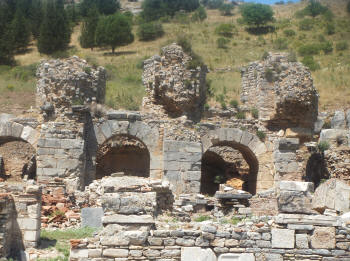
|
|
Upper south entrance to Ephesus
|
|
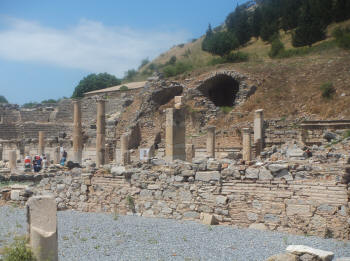
|
|
East-Bath Gynasium
|
|
|
|
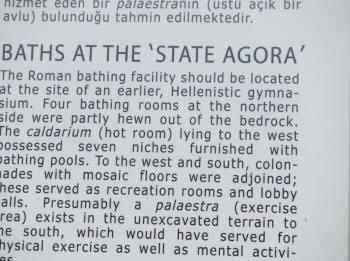
|
|
Notice about Baths
|
|
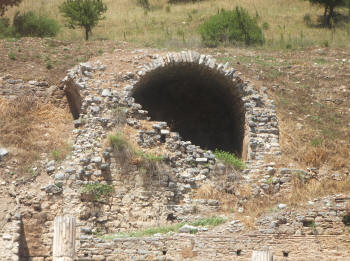
|
|
part of State Agora
|
|
|
|

|
|
Bouleterion/Odeion
|
|
|
|
|
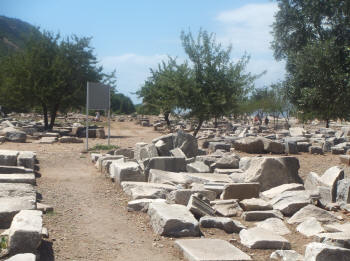
|
|
State Agora
|
|
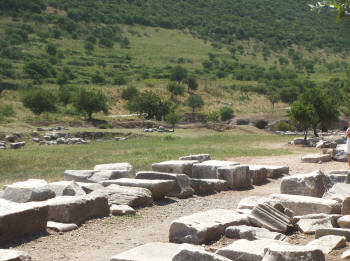
|
|
State Agora
|
|
|
|
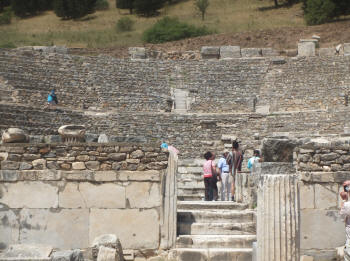
|
|
Bouleterion/Odeion
|
|
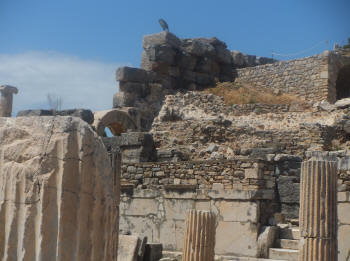
|
|
Bouleterion/Odeion
|
|
|
|
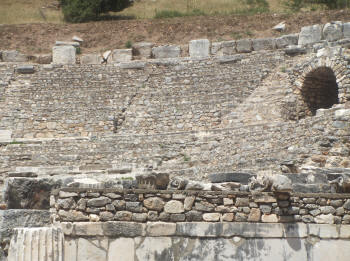
|
|
Bouleterion/Odeion
|
|
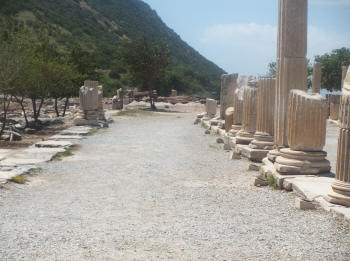
|
|
road beside the basilica of the State Agora
|
|
|
|
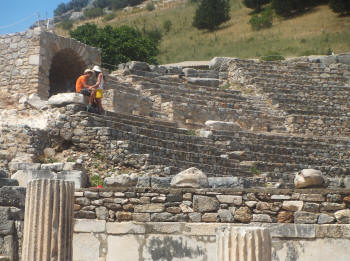
|
|
Bouleterion/Odeion
|
|
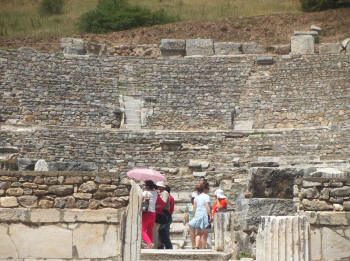
|
|
Bouleterion/Odeion
|
|
|
|
|
|
|
|
|
|
|
|
|
|
|
|
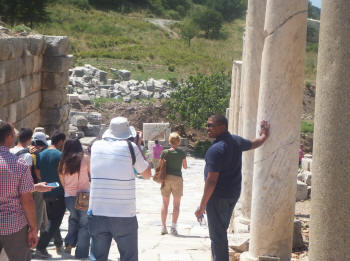
|
|
South Road
|
|
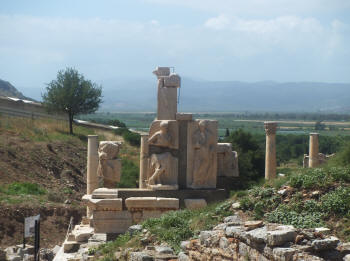
|
|
The Monument of Memmius
|
|
|
|
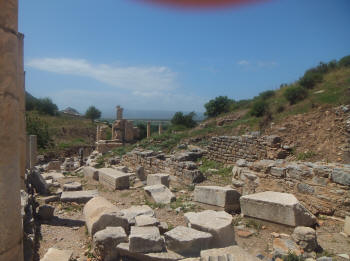
|
|
The Monument of Memmius
|
|
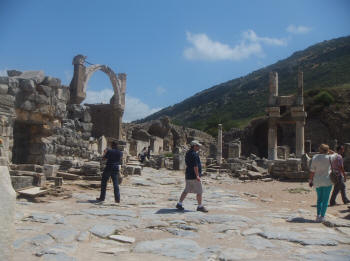
|
|
Square of Domitian
|
|
|
|
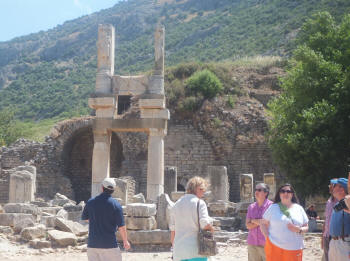
|
|
Terrace of Domitian
|
|
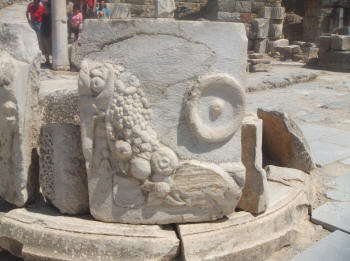
|
|
relief at Square of Domitian
|
|
|
|
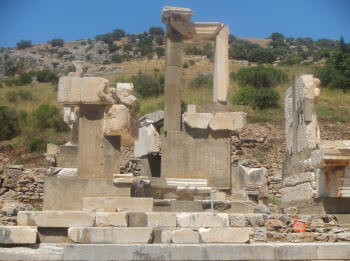
|
|
The Monument of Memmius
|
|
|
|
|
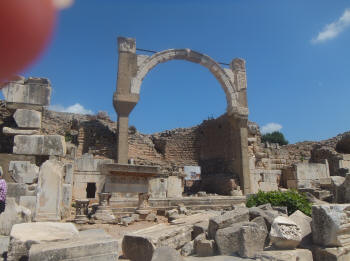
|
|
Fountain of Domitian
|
|
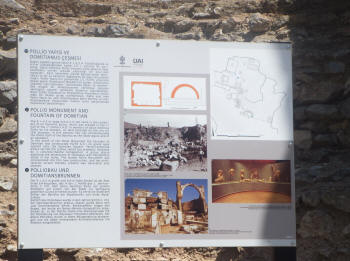
|
|
Fountain of Domitian
|
|
|
|
|
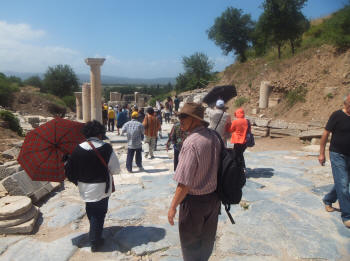
|
|
Curetes Street
|
|
|
|
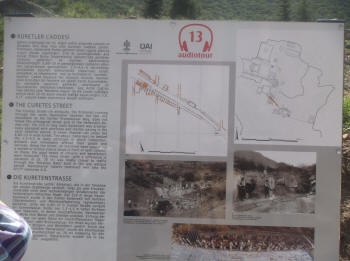
|
|
Curetes Street
|
|
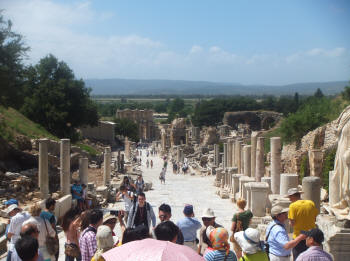
|
|
Curetes Street
|
|
|
|
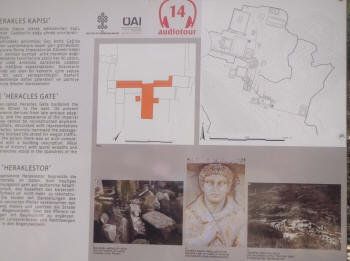
|
|
Hercules Gate
|
|
|
|
|
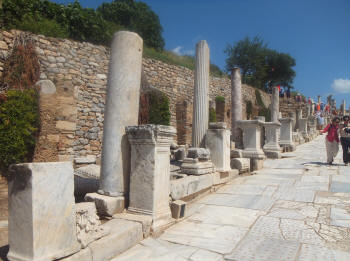
|
|
Curete Street
|
|
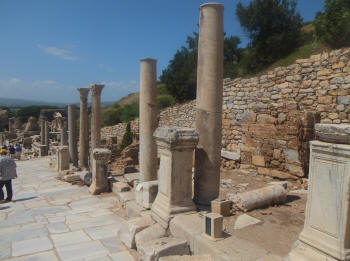
|
|
Curete Street
|
|
|
|
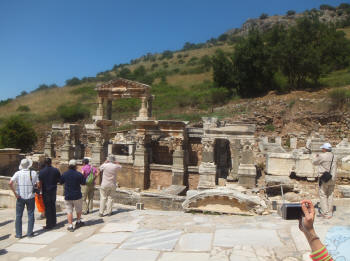
|
|
The Nymphaeum of Trajan
|
|
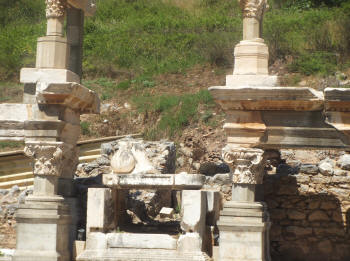
|
|
The Nymphaeum of Trajan
|
|
|
|
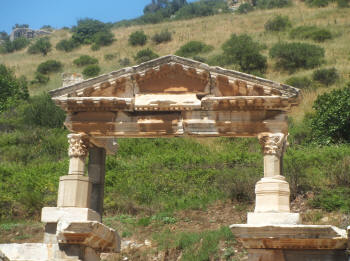
|
|
The Nymphaeum of Trajan
|
|
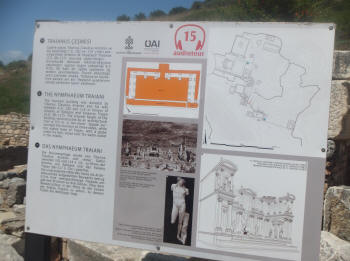
|
|
The Nymphaeum of Trajan
|
|
|
|
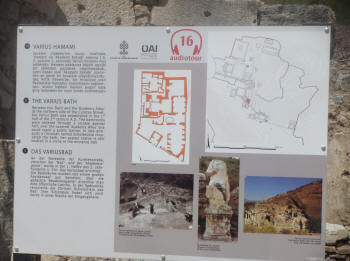
|
|
The Varius Bath
|
|
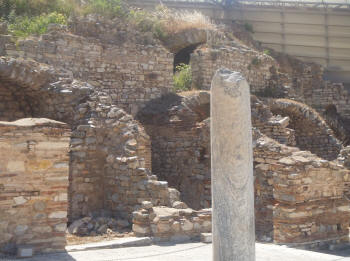
|
|
The Houses
|
|
|
|
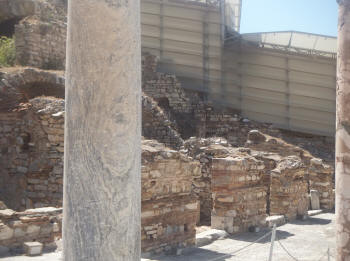
|
|
restored houses in building behind pillar
|
|
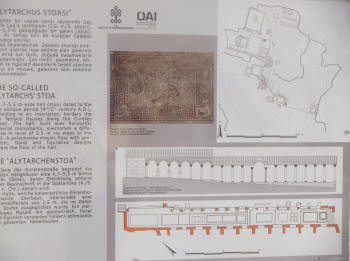
|
|
Mosaic in houses
|
|
|
|
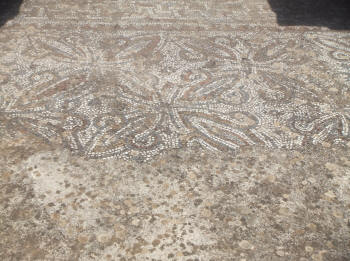
|
|
Mosaic in houses
|
|
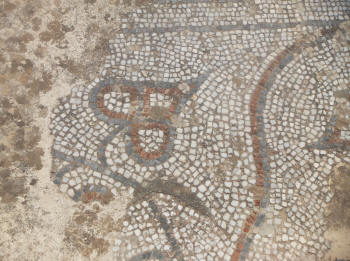
|
|
Mosaic in houses
|
|
|
|
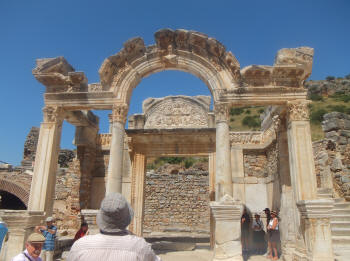
|
|
The Temple of Hadrian
|
|
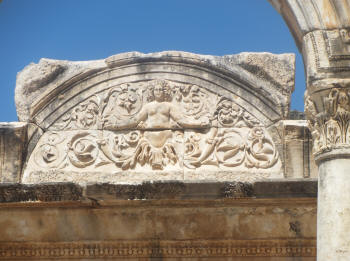
|
|
The Temple of Hadrian
|
|
|
|
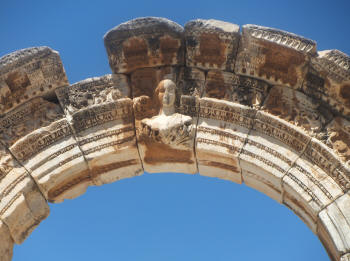
|
|
The Temple of Hadrian
|
|
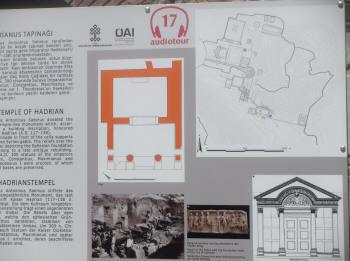
|
|
The Temple of Hadrian
|
|
|
|
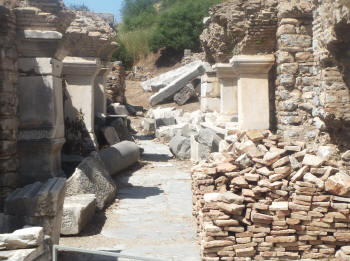
|
|
The Varius Baths
|
|
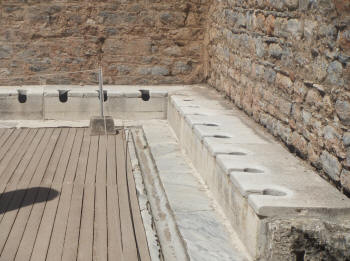
|
|
toilet seats in The Varius Baths
|
|
|
|
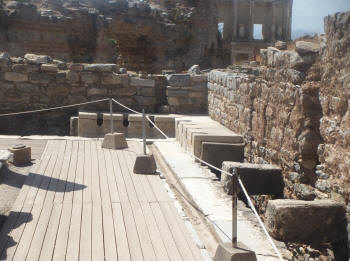
|
|
The Varius Baths
|
|
|
|
|
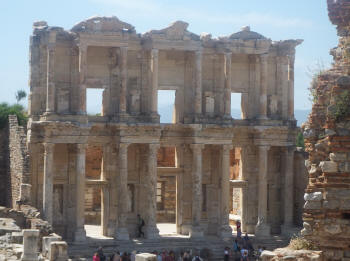
|
|
The Celsus Library
|
|
|
|
|
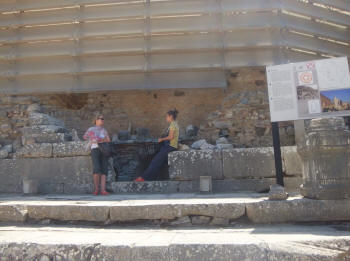
|
|
Building housing restored houses
|
|
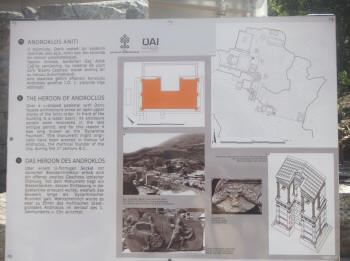
|
|
The Heroon of Androcles
|
|
|
|
|
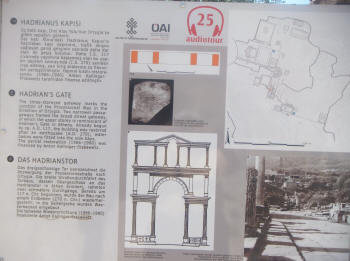
|
|
Hadrian's Gate
|
|
|
|
|
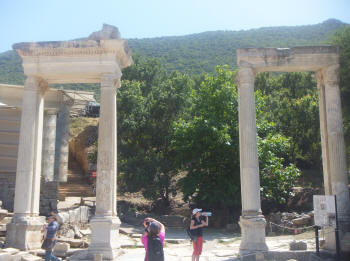
|
|
Hadrian's Gate
|
|
|
|
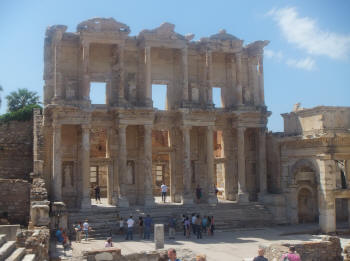
|
|
The Celsus Library
|
|
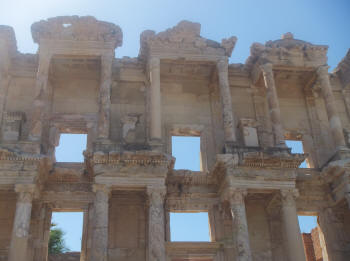
|
|
The Celsus Library
|
|
|
|
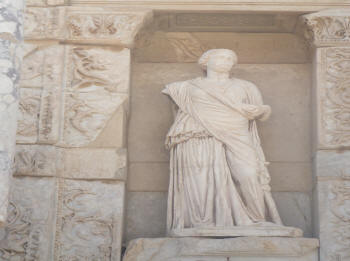
|
|
The Celsus Library
|
|
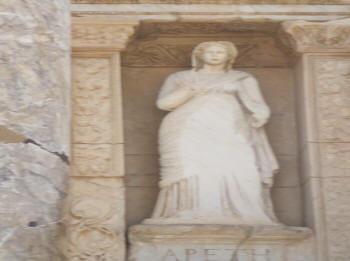
|
|
The Celsus Library
|
|
|
|
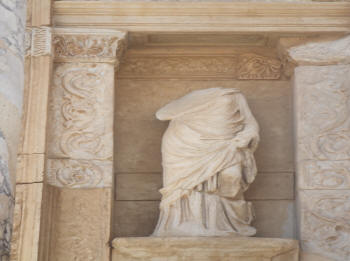
|
|
The Celsus Library
|
|
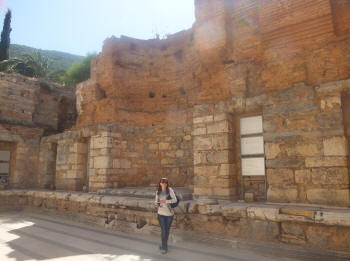
|
|
The Celsus Library
|
|
|
|
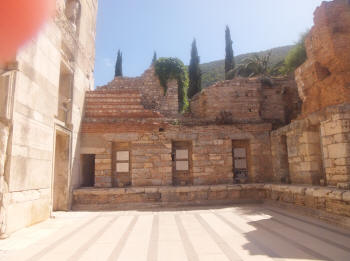
|
|
The Celsus Library
|
|
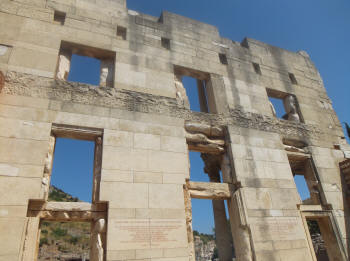
|
|
The Celsus Library
|
|
|
|
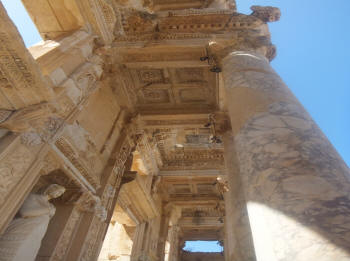
|
|
The Celsus Library
|
|
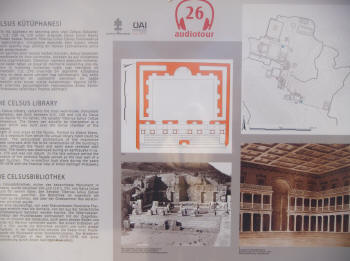
|
|
The Celsus Library
|
|
|
|
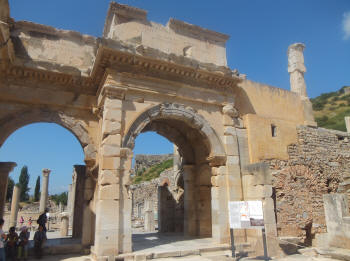
|
|
Gate to the Tetragonos Agora
|
|
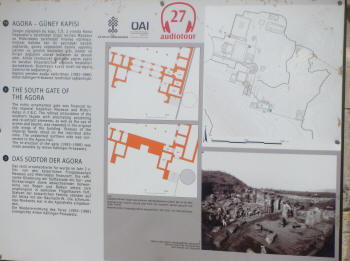
|
|
The Tetragonos Agora
|
|
|
|
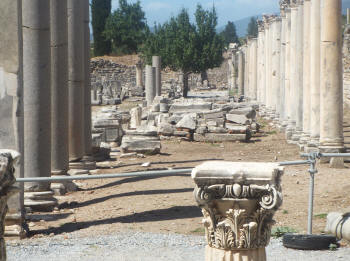
|
|
The Tetragonos Agora
|
|
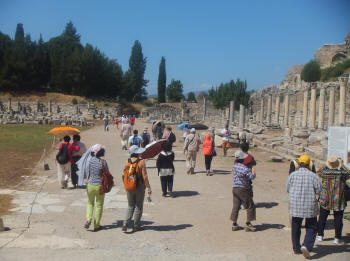
|
|
The Tetragonos Agora
|
|
|
|
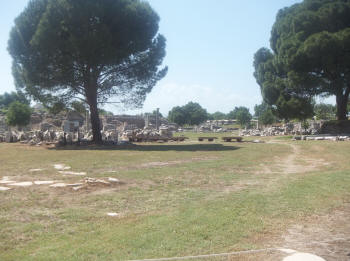
|
|
The Tetragonos Agora
|
|
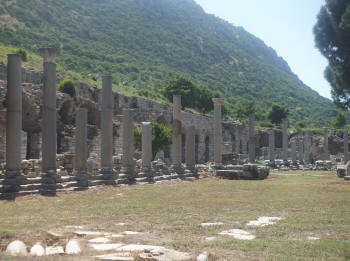
|
|
The Tetragonos Agora
|
|
|
|
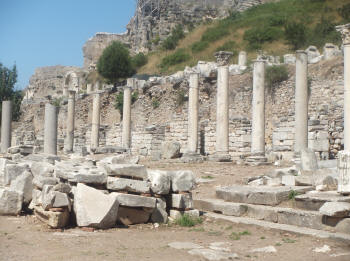
|
|
The Tetragonos Agora
|
|
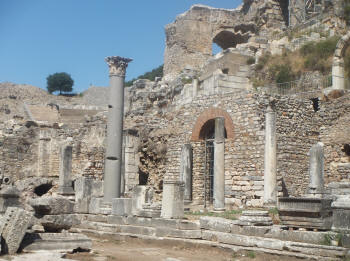
|
|
The Tetragonos Agora
|
|
|
|
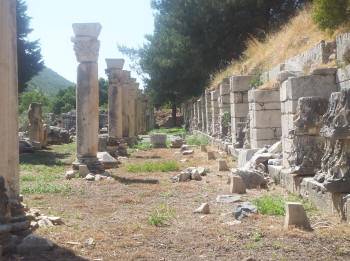
|
|
The Tetragonos Agora
|
|
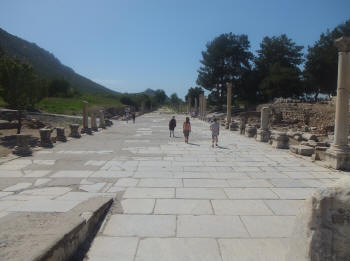
|
|
The Arcadiane
|
|
|
|
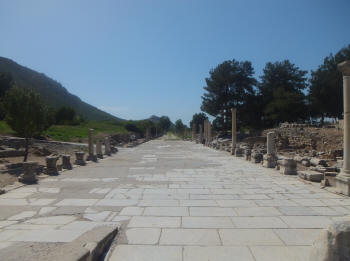
|
|
The Arcadiane
|
|
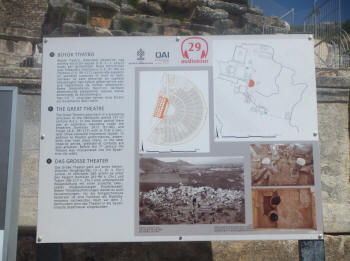
|
|
The Great Theatre
|
|
|
|
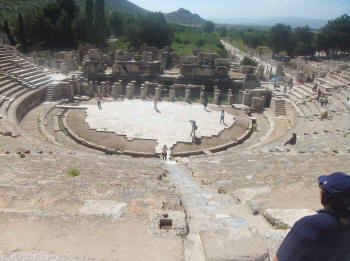
|
|
The Theatre
|
|
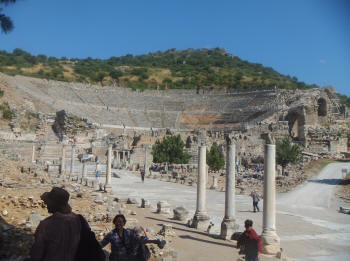
|
|
The Theatre
|
|
|
|
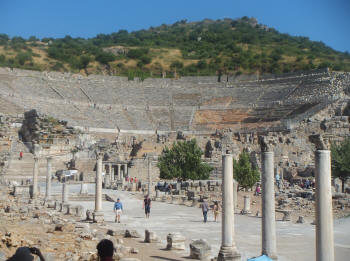
|
|
The Theatre
|
|
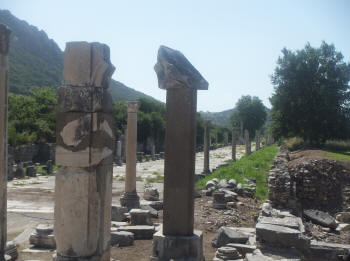
|
|
The Arcadiane
|
|
|
|
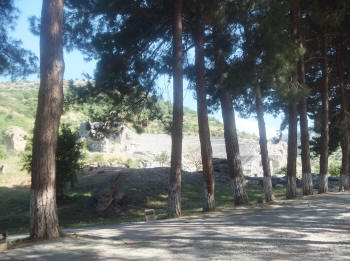
|
|
to lower entrance/exit of Ephesus
|
|
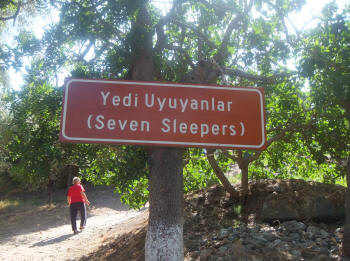
|
|
Cave of the Seven Sleepers out the Ephesus archaelogical site
|
|
|
|
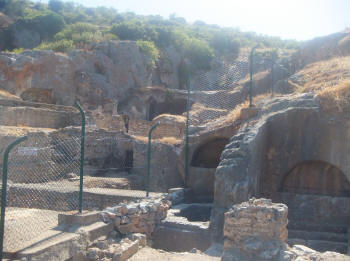
|
|
Cave of Seven Sleepers
|
|
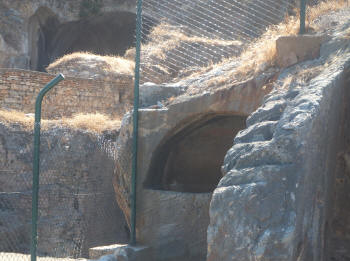
|
|
Cave of Seven Sleepers
|
|
|
|
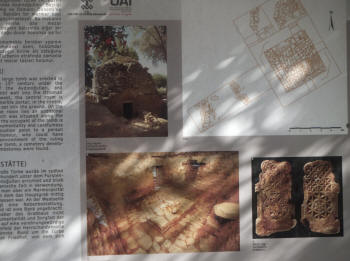
|
|
Cave of Seven Sleepers
|
|
|
|
|
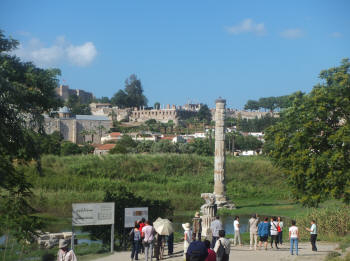
|
|
Arthemision
|
|
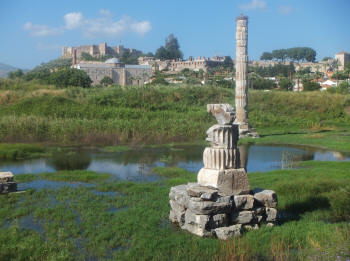
|
|
Arthemision
|
|
|
|
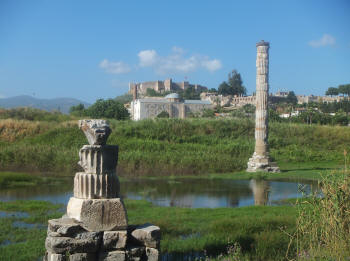
|
|
Arthemision
|
|
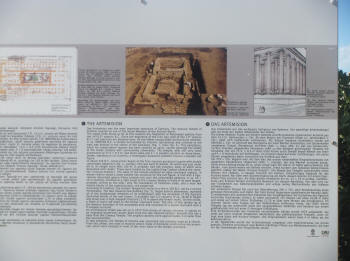
|
|
Arthemision
|
|
|
|
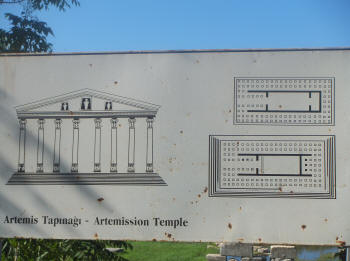
|
|
Arthemision
|
|
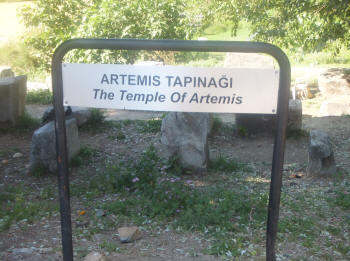
|
|
Arthemision
|
|
|
| 18 September 2013 |
Sermon on Lessons from Ephesus

| 























